Persimmon trees can be found all around the world from Asian countries like Japan, China, and Taiwan, to other regions across North America, Europe, Australia, and Africa.

The fruit is often round and similar in shape to tomato, with a thick outer skin. Some American varieties of persimmon can also be recognized by their pointed bottoms, which make them look like acorns.
Persimmons contain high amounts of vitamin C and fiber.
They come in two main varieties, namely astringent and non-astringent fruits. The astringent persimmons have a bitter taste, while the non-astringent type is generally much sweeter. Both types are also rich in antioxidants, minerals, and phytonutrients.
There are several varieties of persimmons, including those from Asia, Africa, and America. Each variety has its unique characteristics and flavors.
In this article, we will be listing just a few of the different Persimmon trees that can be found around the world.
1. Oriental Persimmon (Diospyros Kaki)
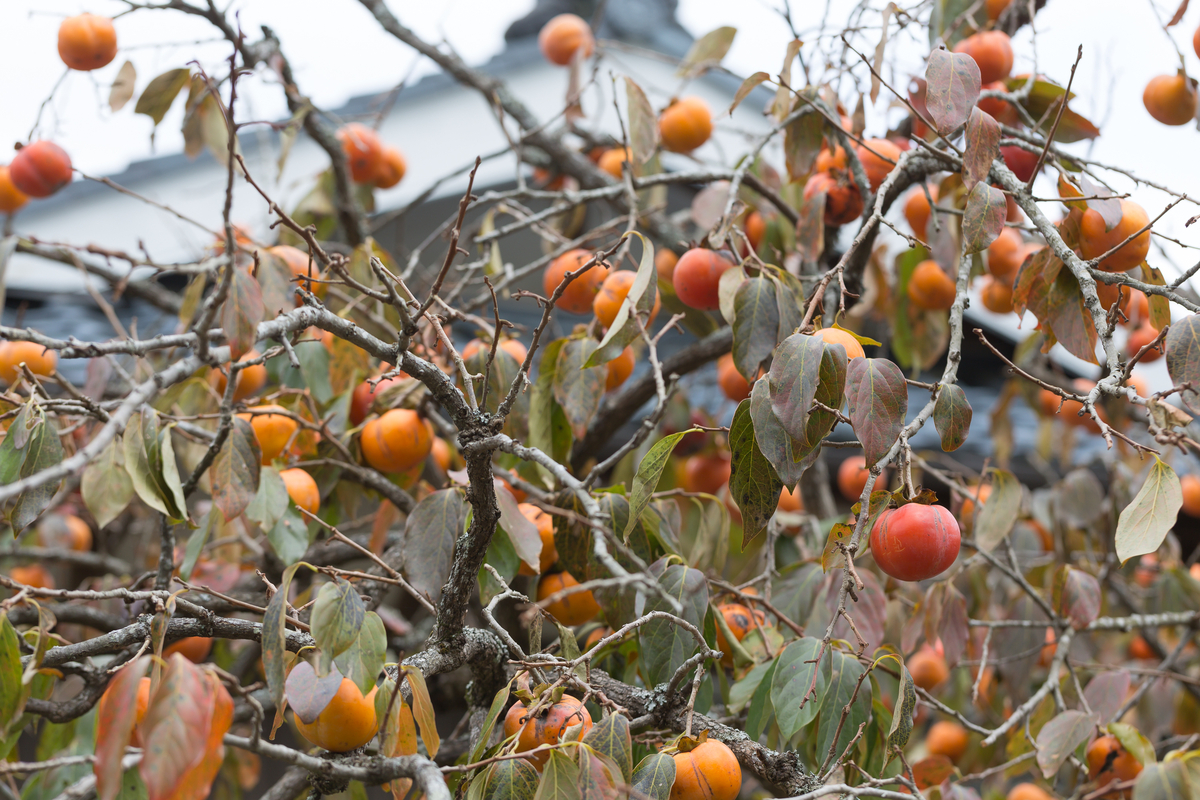
The most widely cultivated species of Persimmon was originally found in parts of China and Northeast India before being introduced to Japan in the 7th century.
It is now known as Oriental Persimmon, Diospyros kaki, and it is one of the oldest cultivated trees in the world. Its leaves are shaped like an umbrella since they are as wide as they are long.
When ripe, the round fruits often have a deep orange color, but some varieties can also be bright red like a tomato.
2. Fuyu Persimmons (Diospyros Kaki ‘Fuyu’)

This is one of the many varieties of Diospyros Kaki that are commonly cultivated in China and Japan.
Many of these trees can only be distinguished by their fruit since they share the same leaves and overall size. They are one of the sweetest non-astringent persimmons and as such is one of the most widely sold.
You can identify them by their slightly flattened shape that makes them resemble orange tomatoes. There is also a giant Fuyu persimmon which produces significantly larger fruits that have a similar taste to apricots.
RELATED: 17 Different Types Of Persimmon Fruits (Including Photos)
3. Hachiya Persimmon (Diospyros Kaki ‘Hachiya’)
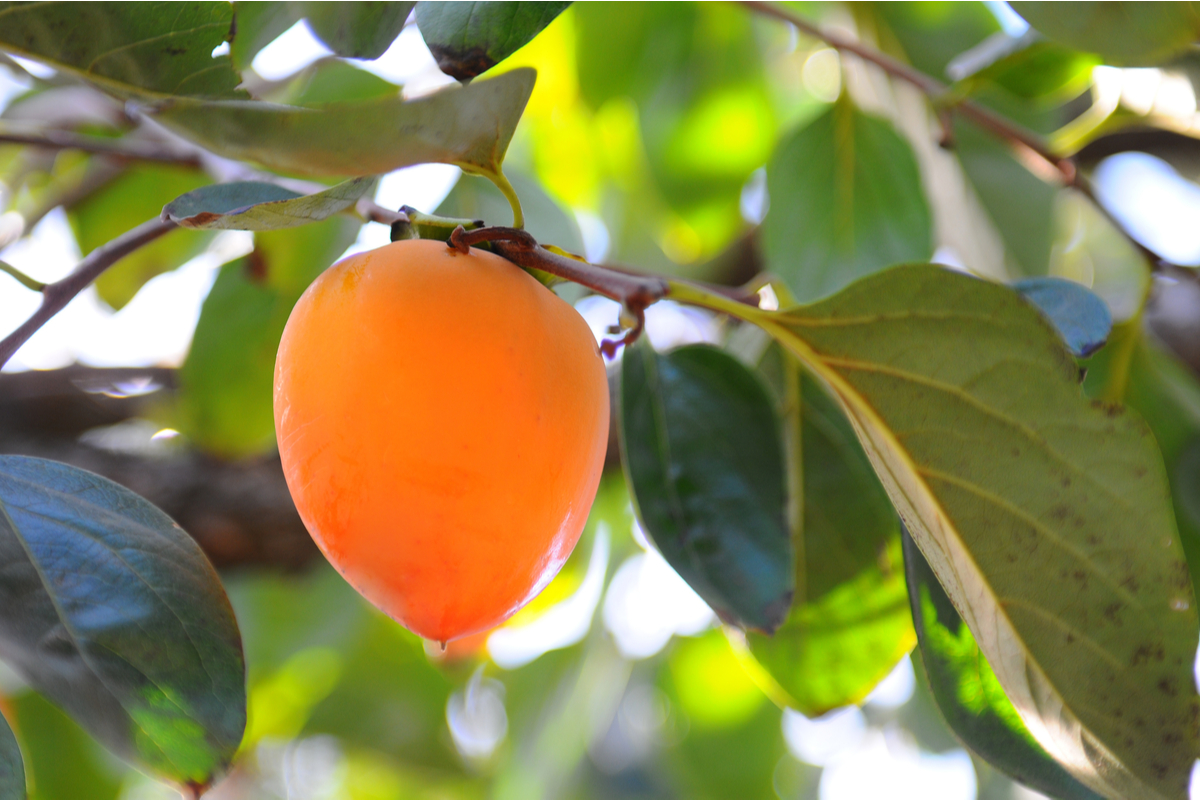
Another common variety of Diosypyros Kaki, the fruits from this tree are smaller than those of the Fuyu variety, with a more oblong shape.
They can only be eaten when they are fully ripe, as before this they contain high levels of tannic acid which makes them incredibly bitter.
Once the fruits have matured, however, they are perfectly juicy and sweet. Hachiyas are not as common as other varieties, so you may have to travel abroad if you want to find them.
4. Cinnamon Persimmons (Diospyros Kaki ‘Hyakume’)

Much like the Hachiya variety of Diospyros Kaki, the fruit from this tree is longer and more heart-shaped than those from the Fuyu tree. Their name comes from the brown dots that are scattered over the bright orange skin.
The sweetest version of this fruit is the seeded variety, with the unseeded ones tasting far more bitter. When fully ripe, the soft flesh of this fruit tastes very similar to brown sugar.
5. Sharon Fruit (Diospyros Kaki ‘Thunb’)

This is the final variety of the Diospyros Kaki tree we will be looking at on this list, and also one of the most well-known outside of Asia.
This tree is native to southern China and grows up to 30ft tall. Like the other varieties of Diospyros Kaki mentioned above, Sharon fruit is usually identified by its fruit alone, as it shares the same leaves and overall appearance as other species of this tree.
However, unlike the other varieties, Sharon fruit is both seedless and coreless making it very easy to eat whole.
6. The Date-Plum (Diospyros Lotus)
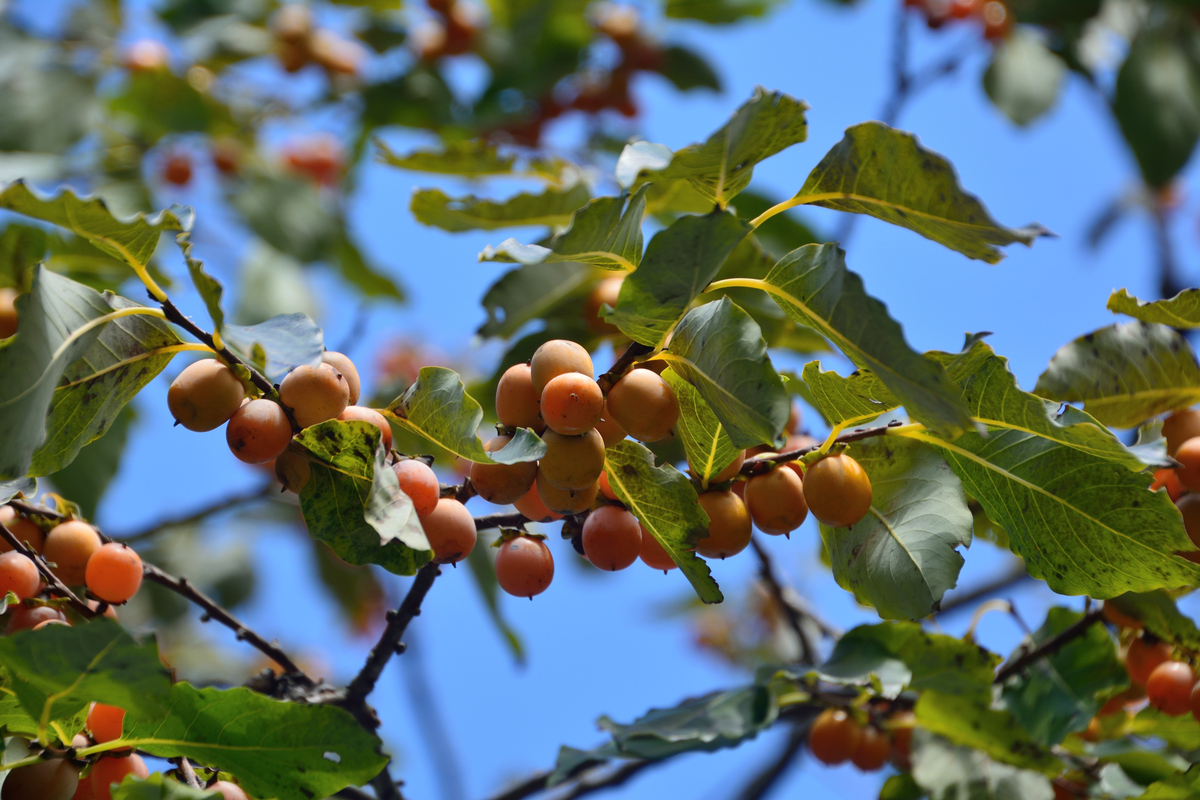
Also known as the Caucasian or Lilac persimmon, Diospyros lotus can be found growing in many areas of eastern Asia and Europe. This variety of persimmon has been cultivated for centuries, especially in Persia and Turkey.
The fruit looks very similar to the Oriental persimmon, although it is much smaller and slightly more oval-shaped. Like the oriental persimmon, the date plum has a sweet flavor and yellow coloring when ripe.
7. American Persimmons (Diospyros Virginiana)
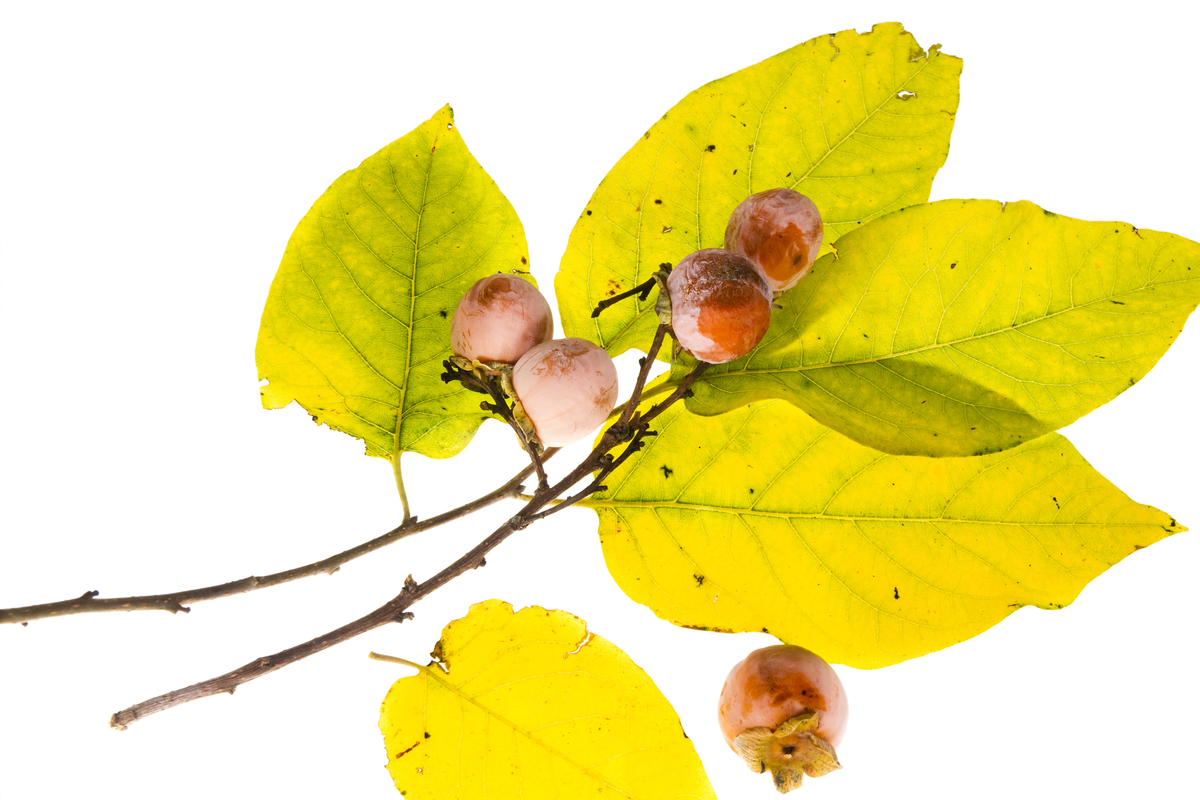
These American persimmons are native to the southeast states of America and typically grow much taller than Asian Persimmon trees.
They grow best in temperate climates with well-drained soil, and their oval-shaped leaves are very similar to those found on Oriental Persimmon trees.
When unripe, these persimmons are extremely astringent but mature to have a sweet taste that is commonly used in jams and other desserts.
RELATED: Nature Sure Is Beautiful! 28 Different Types Of American Trees
8. Velvet Persimmon (Diospyros Discolor)

Diospyros Discolor is native to the Philippines and southern Taiwan. Trees that are planted with seeds can take up to 7 years to bear fruit.
As such, many farmers resort to using cuttings, which produce more productive trees that bear fruit in only four years.
The fruit itself is round with a thick furry skin that comes in a variety of different colors. When ripe, the fruit has a creamy texture and a taste that is remarkably similar to peaches.
9. Black Sapote (Diospyros Nigra)
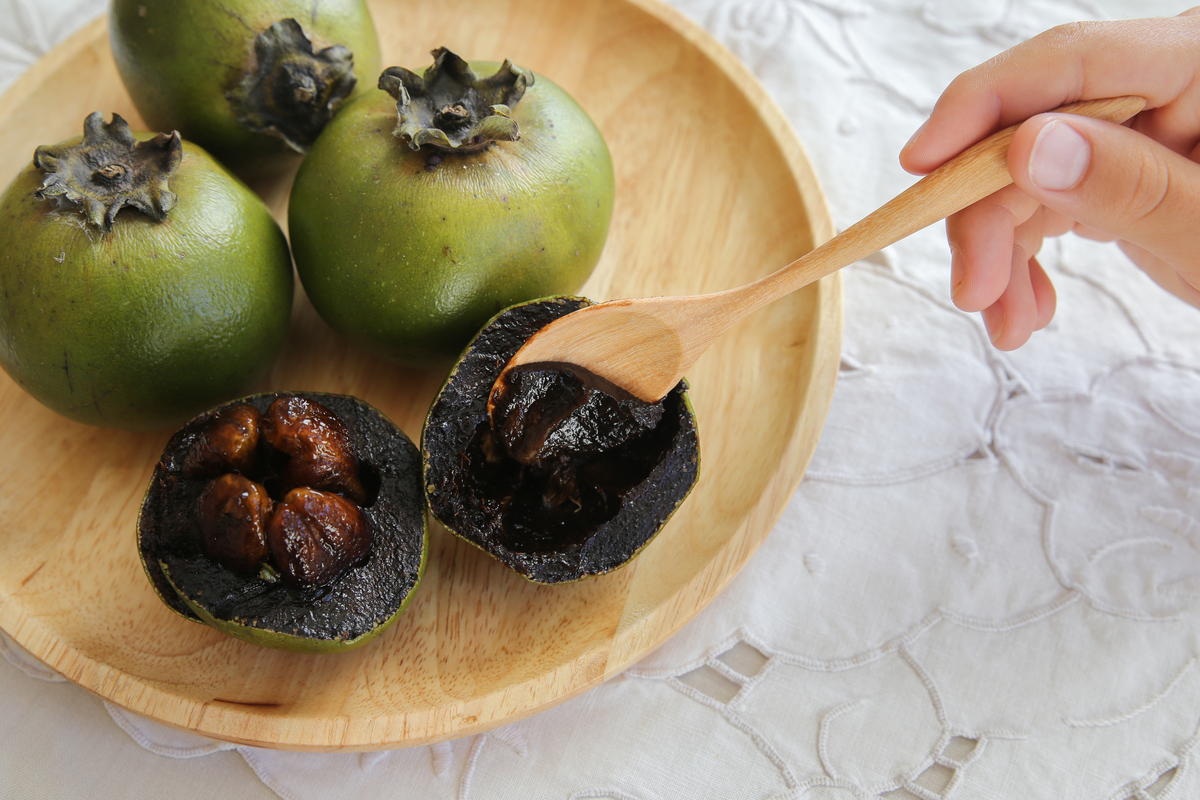
Also known as chocolate pudding fruit, black sapotes are an evergreen tree native to Mexico and Central America.
The fruits have a similar shape to tomatoes, with a thick inedible skin that goes from olive-colored to yellow-green when ripe.
When fully matured, the flesh has the same color and taste as chocolate pudding. As such, black sapotes are quite popular among Mexican cooks, who use them in soups, stews, and even ice cream.
10. Texas Persimmon (Diospyros Texana)
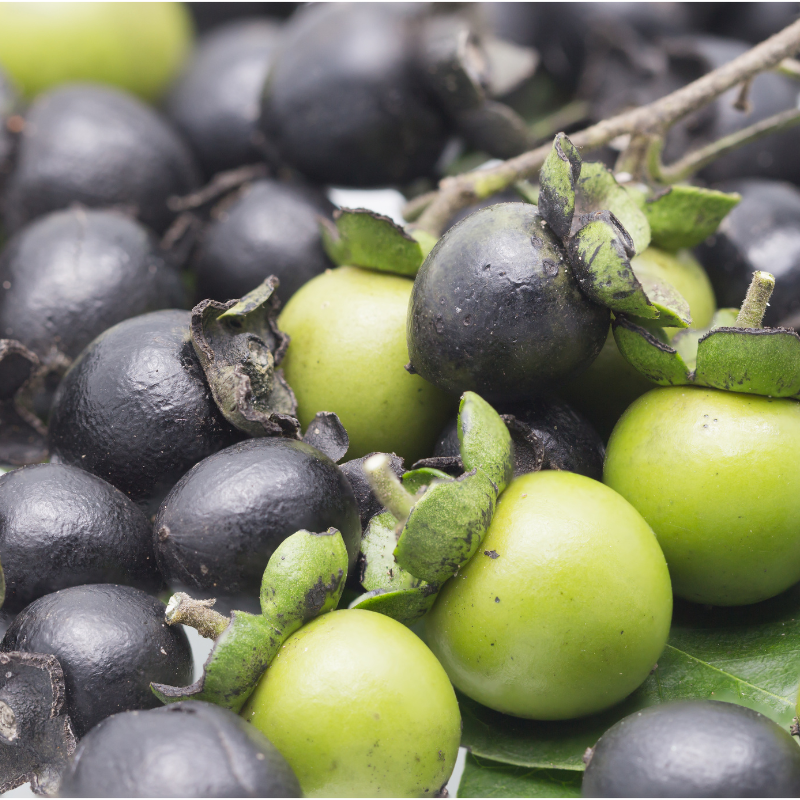
Native to Texas, this persimmon tree produces small, black fruits that can be easily mistaken for grapes.
The trees usually grow no larger than 10ft, but can reach up to 39ft in the right conditions. The berries contain triangular seeds and are deliciously sweet when ripe. Other names for this fruit include black persimmons or chapote Manzano in Mexico.
11. Sand Apples (Diospyros Chamaethamnus)
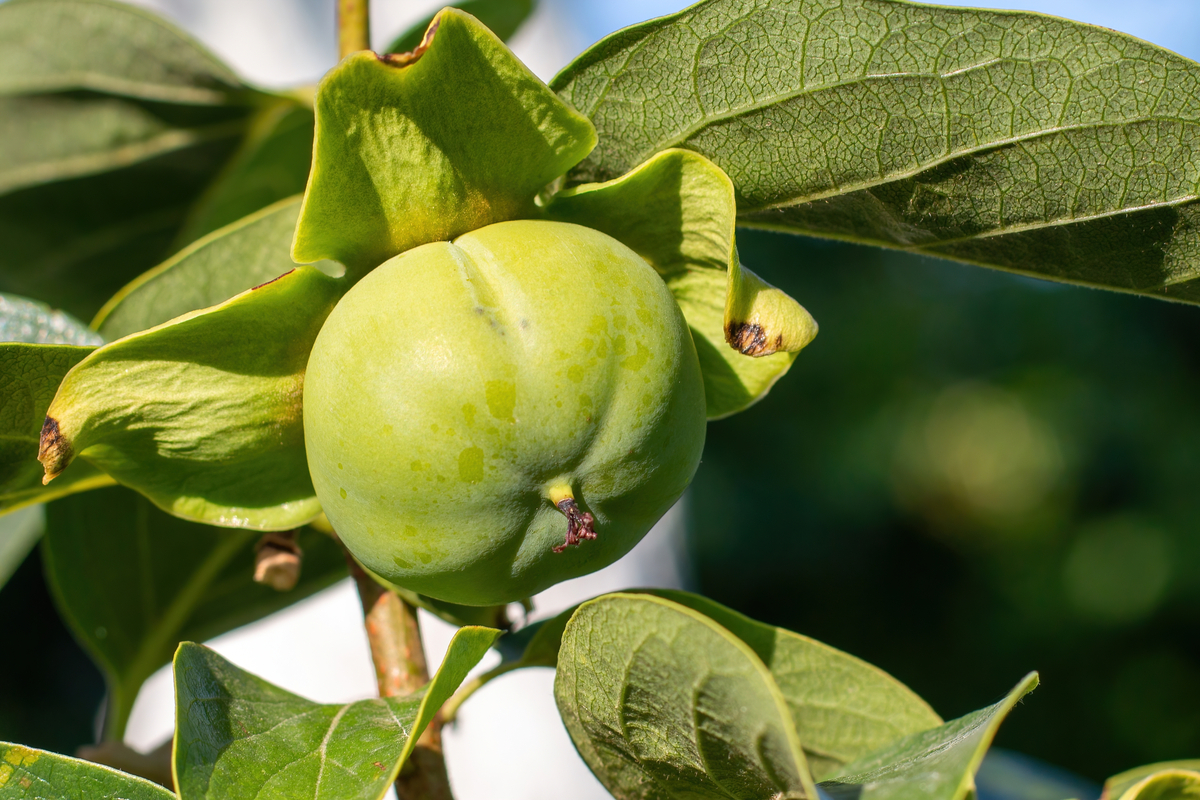
This is a distant cousin of the persimmon tree that is native to Namibia. Unlike many of the other trees on this list, this plant produces unbranched stems which grow no taller than 2ft.
The small green fruits are edible and delicious, containing a soft pulp that is rich in vitamin C. This pulp is commonly mashed up in water to make a rich, milky beverage.
12. Gold Apples (Diospyros Decandra)
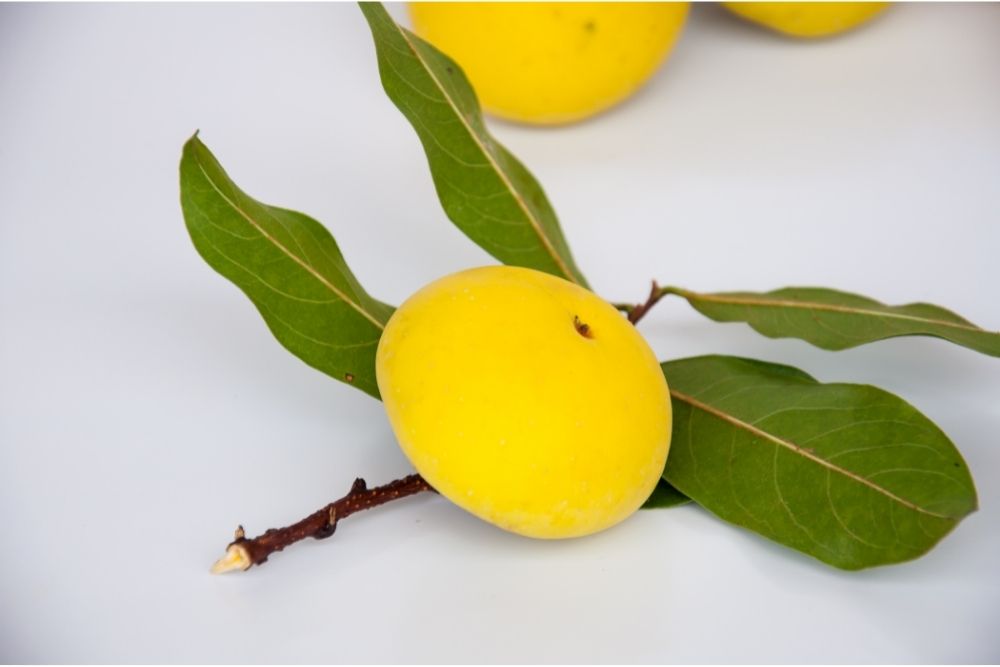
The golden apple tree is commonly found growing near temples in Vietnam as well as some regions of Thailand. It is a small tree that often grows no more than 20ft tall.
The fruits from this tree are very similar in appearance to yellow apples, being roughly similar in size. These fruits are completely edible and very delicious when prepared properly.
13. Jackalberries (Diospyros Mespiliformis)

These trees are native to the savannas of Africa and get their name because the tiny fruits they drop are commonly eaten by jackals.
Jackalberries are green with a white center when unripe but mature to take on a bright yellow coloring. They are commonly dried before eating and can also be used to make beer and brandy.
The bark and leaves from this tree contain tannin, which is frequently used in the treatment of bleeding wounds
14. Yellow Persimmon (Diospyros Australis)
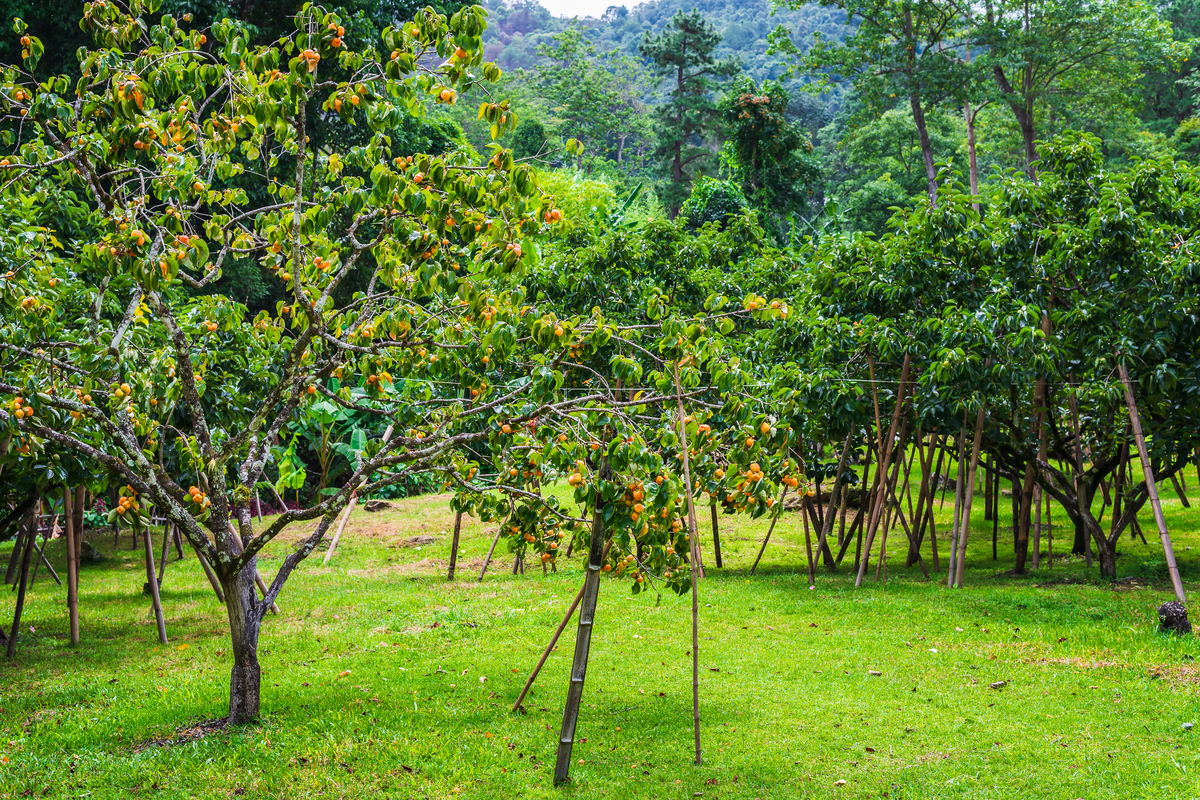
Diospyros Australis is native to Eastern Australia and is the most southerly form of persimmon tree on the planet.
The fruits are much smaller than those produced by most other types of persimmon trees and are commonly used in bushfood.
Like its fruit, the tree itself is quite small, reaching a maximum height of only 65ft for the largest specimens.
15. Rigid Star Berry (Diospyros Squarrosa)

This persimmon tree is found in Kenya, Tanzania, Zimbabwe, and several other areas in the afrotropics.
The fruits are one of the smallest we have seen on this list and have small lobes on the top of their round bodies which make them easily identifiable. They are green when immature and turn dark yellow as they ripen.
This tree is most commonly found growing alongside streams or on rocky foothills.
16. Gray Persimmon (Diospyros Pentamera)
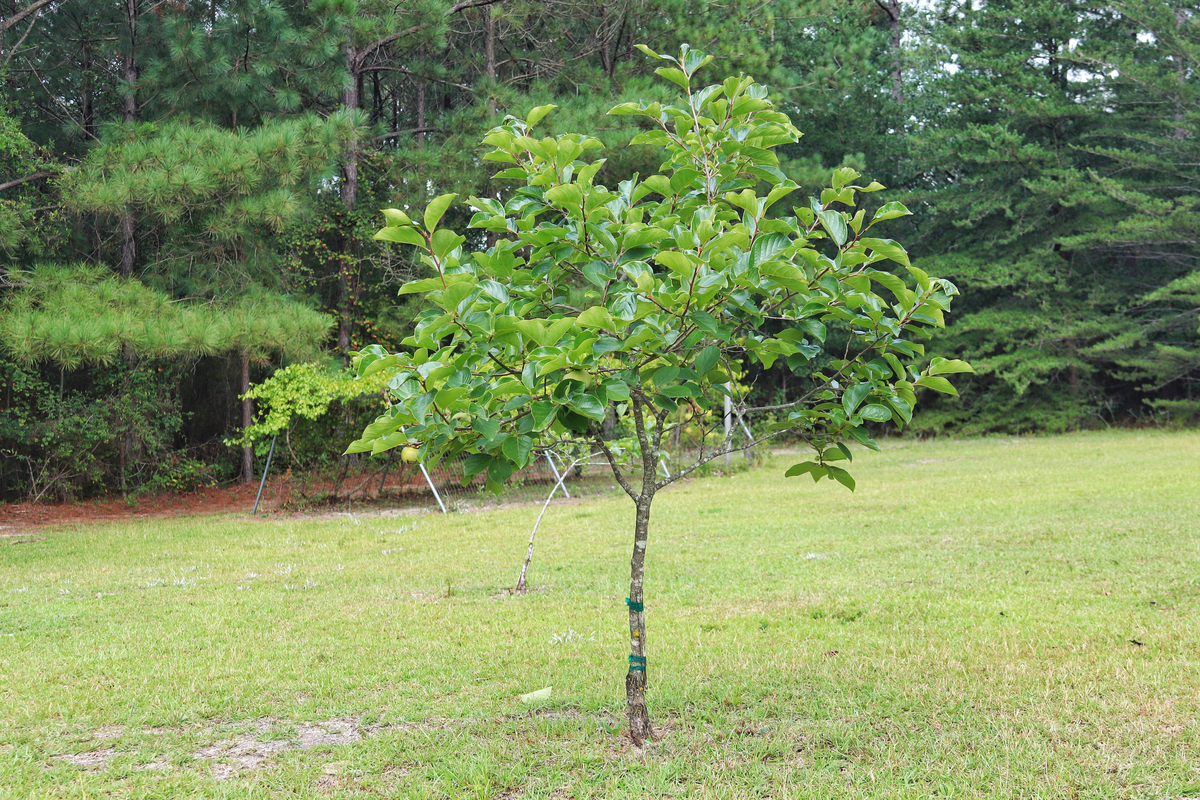
The final tree on our list is the northern relative of Diospyros Australis and shares many of the same traits and features. Its berries are generally the same size as their southern cousins and are light gray.
While they are edible to humans, these berries are commonly eaten by many species of Australian birds which makes gathering them quite difficult.
Conclusion
Persimmons are one of my favorite foods. Not only are they sweet and juicy, but they’re so easy to eat since all you need to do is peel off the outer layer and cut it into pieces.
As you can see, there are many different varieties of persimmon trees around the world, each with its unique characteristics and uses.
We have mainly focused on the fruiting trees, but there are other types as well that are grown purely for the use of their wood.
Regardless of what type of persimmon tree you have in your local area, keep an eye on them to see when the fruit ripens.
If you choose your moment well, you can enjoy a delicious fruity treat before the birds get to them first.
Editor’s Recommendations
Shade in Asia: 16 Different Types Of Asian Trees







